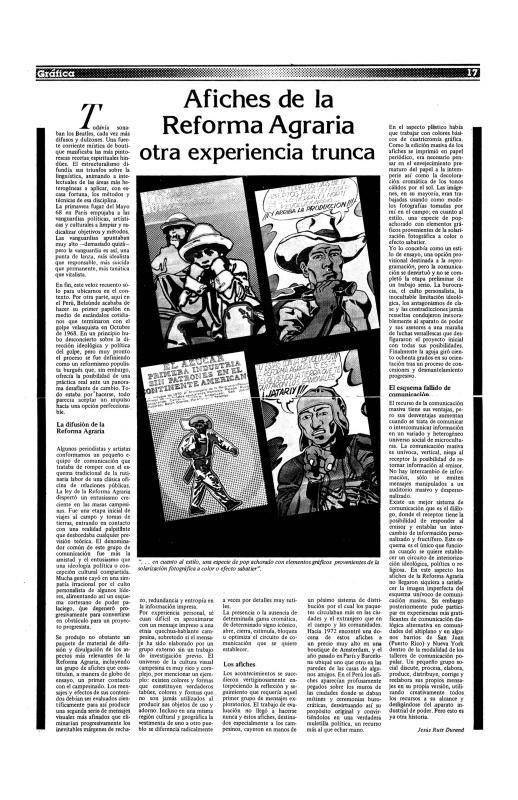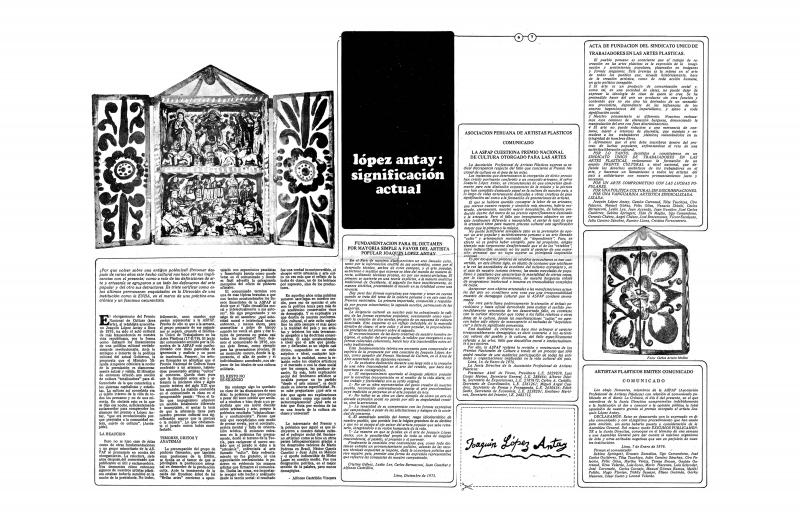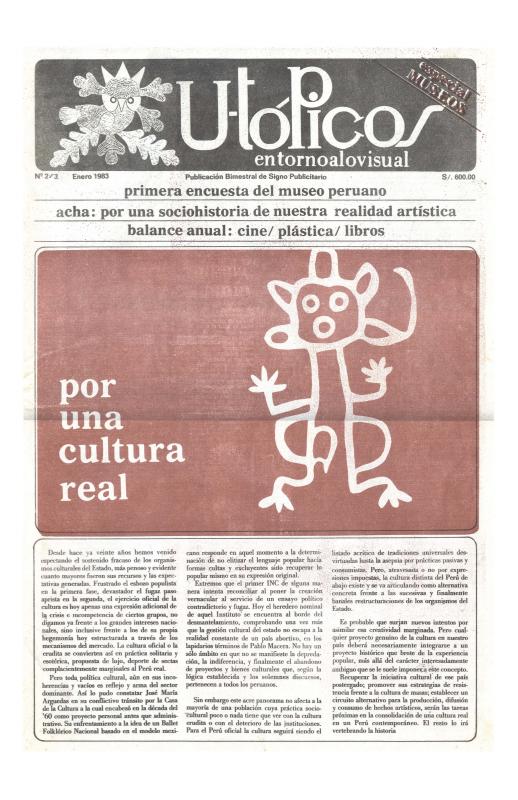U-tópicos: Entornoalovisual was a magazine that enjoyed a brief lifespan in Peru (only three issues were published, between 1982 and 1984). It was directed by the art historian Alfonso Castrillón (b. 1935), edited (beginning with the second issue) by the art critic Gustavo Buntinx (b. 1957), and designed by Jesús Ruiz Durand (b. 1940), a visual artist who was known for the graphic designs he produced for the General Juan Velasco Alvarado (1968–75) government as part of its reappraisal of the country’s rural population and agricultural sector. The magazine took a social-Marxist approach to art and was part of the broader movement that emerged in Latin America in the 1970s and 1980s as a result of the work of theorists such as the Peruvian Juan Acha (1916–1995) and the Argentinean Néstor García Canclini (b. 1939) (both of whom lived in Mexico), the Brazilian Mario Pedrosa (1900–1981), Mirko Lauer (b. 1947), and the above-mentioned Castrillón.
Each issue of the magazine was focused on a particular subject; the third issue (number 4/5), whose back cover is the subject of this annotation, addressed the practice of art from the perspective of Marxist theory. The back cover, however, returned to the theme of the first issue of U-tópicos to explore the complex relationships between “high art” and “popular art.” This volume featured Castrillón’s production, due to the controversy about the Premio Nacional de Cultura [National Culture Award] (1975) awarded to Joaquín López Antay, the creator of traditional altarpieces, since Castrillón took an active part in the ensuing national debate. Something similar happened with Buntinx, who explored connections between art and violence, politics, and religion, and drew attention to urban works of popular art that formed the basis of various curatorial projects and publications, as well as his own personal initiative, Micromuseo (“al fondo hay sitio” [there’s room at the back]), which he still directs to this day. It [Micromuseo] is based on the alternative idea of “a promiscuous museum concept in which so-called artistic works are exhibited alongside mass-produced products or recycled objects and outstanding examples of popular creativity.”
[See other articles by Gustavo Buntinx (pseud., Sebastián Gris) in the ICAA digital archive: “Arte joven peruano: ¿El sueño del mercado propio? Una conversación con Claudia Polar” (doc. no. 1146565); “¿Entre lo popular y lo moderno? Alternativas pretendidas o reales en la joven plástica peruana” (doc. no. 1143012); and “Está naciendo algo... una entrevista con Mirko Lauer” (doc. no. 1136477). See also the following articles published in U-tópicos: Entornoalovisual: “Afiches de la Reforma Agraria: otra experiencia trunca,” by Jesús Ruiz Durand (doc. no. 1139386); “Desbordar los límites” (anonymous) (doc. no. 1292558); “Hacia una crítica marxista del marxismo. Entre Marx y la Estética,” by Gustavo Buntinx et al. (doc. no. 1292607); “La necesidad del arte,” by Juan Wilfredo et al. (doc. no. 130282); “López Antay: significación actual,” by Alfonso Castríllo Vizcarra (doc. no. 1136495); and “Por una cultura real,” by Hugo Salazar del Alcazar (doc. no. 1292528)].








